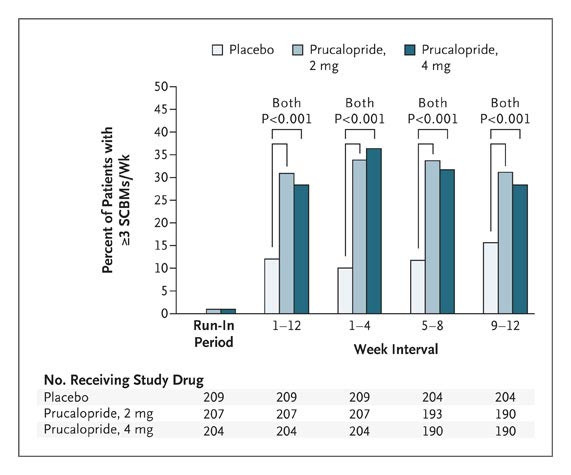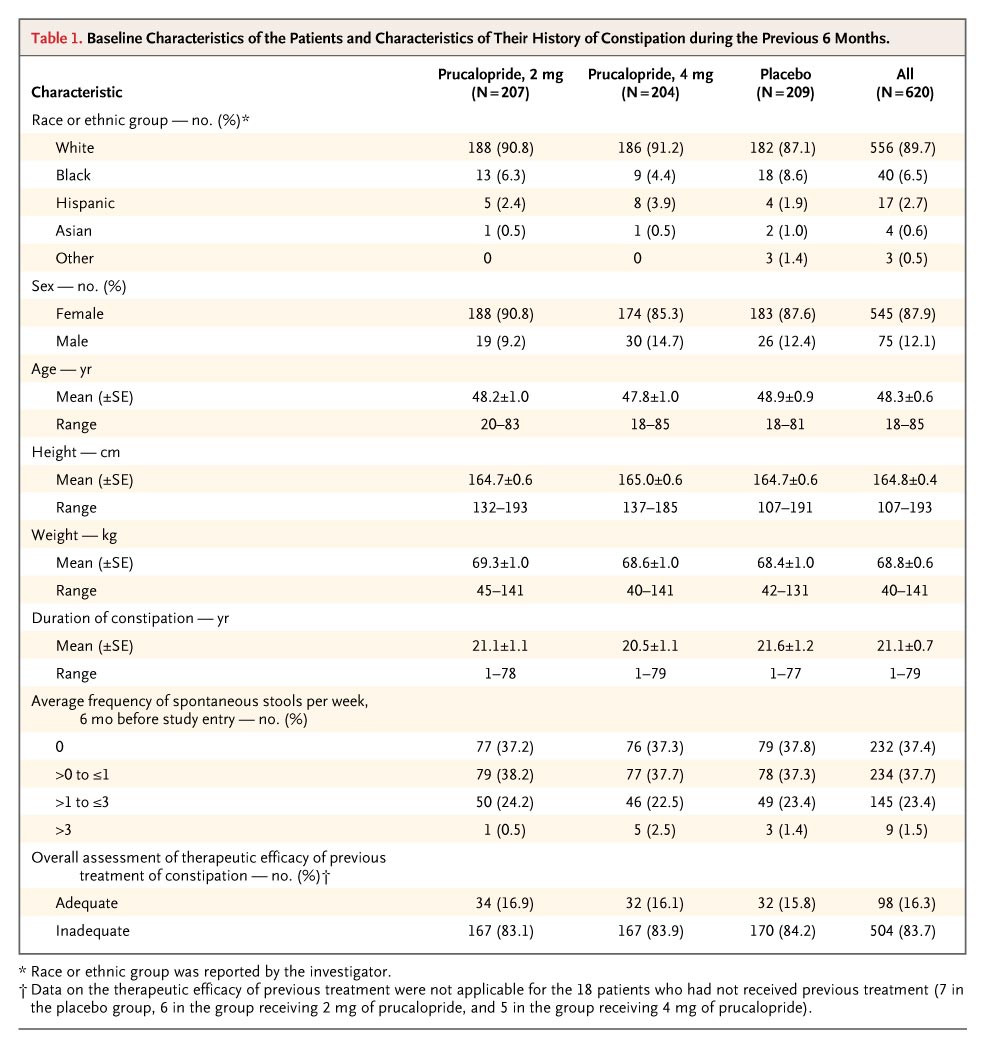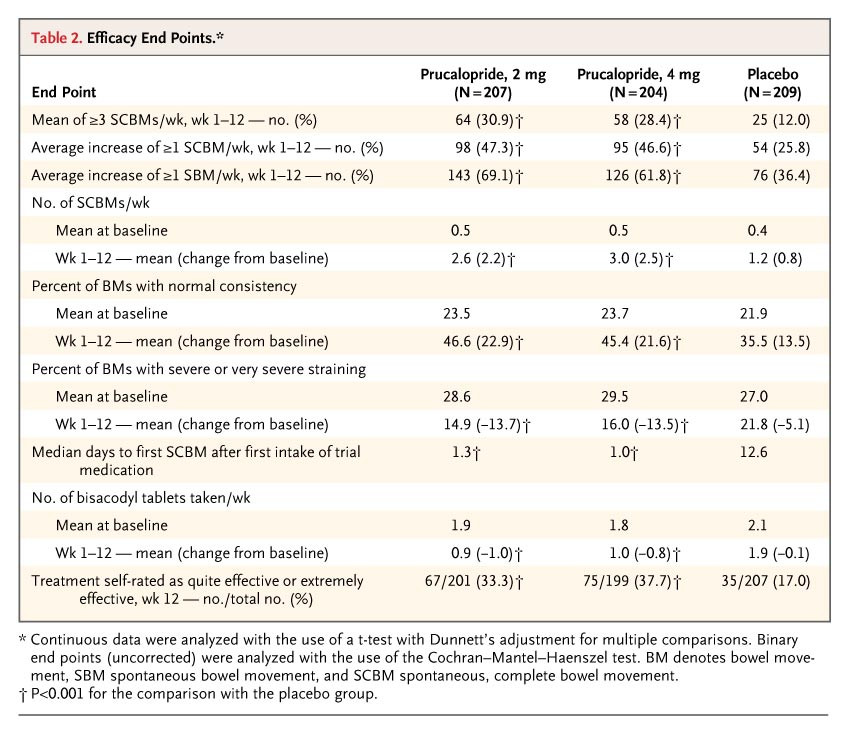
| Size | Price | Stock | Qty |
|---|---|---|---|
| 50mg |
|
||
| 100mg |
|
||
| 250mg |
|
||
| 500mg |
|
||
| 1g |
|
||
| 2g | |||
| 5g | |||
| Other Sizes |
Purity: ≥98%
Prucalopride (R 108512; R108512; R 108512; trade names: Resolor; Resotran; Motegrity), a novel enterokinetic and benzofuran-based compound, is a novel, selective, high affinity 5-HT (serotonin) receptor agonist for 5-HT4A and 5-HT4B receptor with anti-idiopathic constipation activity. It shows >290-fold selectivity for 5-HT4A and 5-HT4B over other 5-HT receptor subtypes and inhibits 5-HT4A and 5-HT4B with Ki values of 2.5 nM and 8 nM, respectively. With a pEC50 of 7.5, prucalopride causes contractions in a concentration-dependent manner. Following electrical field stimulation, prucalopride dramatically increases the guinea pig proximal colon's rebound contraction. The FDA approved prucalopride in December 2018 for the treatment of idiopathic chronic constipation.
| Targets |
5-HT4A Receptor ( pKi = 8.6 ); 5-HT4B Receptor ( pKi = 8.1 )
|
|
|---|---|---|
| ln Vitro |
|
|
| ln Vivo |
|
|
| Animal Protocol |
In the prefrontal cortex, prucalopride maximally increased ACh and histamine levels at 5 and 10 mg/kg, while PRX-03140 significantly increased cortical histamine levels at 50 mg/kg, failing to affect ACh release at doses below 150 mg/kg, according to studies using microdialysis in rats.
|
|
| Toxicity/Toxicokinetics |
Effects During Pregnancy and Lactation
◉ Summary of Use during Lactation No published experience exists with prucalopride during breastfeeding. However, the manufacturer reports an unpublished study that indicates a relatively low amount of drug in breastmilk. Until more data become available, monitor the breastfed infant for diarrhea. ◉ Effects in Breastfed Infants Relevant published information was not found as of the revision date. ◉ Effects on Lactation and Breastmilk Relevant published information was not found as of the revision date. |
|
| References | ||
| Additional Infomation |
Prucalopride Succinate is the succinate salt form of prucalopride, an orally bioavailable dihydro-benzofuran-carboxamide and selective serotonin (5-HT4) receptor agonist, with gastrointestinal (GI) prokinetic activity. Upon oral administration, prucalopride specifically targets, binds to and stimulates the 5-HT4 receptor. This alters colonic motility patterns and stimulates colonic mass movements. This may normalize bowel movements and may relief chronic constipation. In addition, by increasing esophageal and gastric motility, prucalopride may also provide relief for aspiration-associated symptoms.
See also: Prucalopride (has active moiety). Drug Indication Resolor is indicated for symptomatic treatment of chronic constipation in adults in whom laxatives fail to provide adequate relief. Treatment of chronic constipation, Treatment of opioid-induced constipation |
| Molecular Formula |
C22H32CLN3O7
|
|
|---|---|---|
| Molecular Weight |
485.96
|
|
| Exact Mass |
485.192
|
|
| Elemental Analysis |
C, 54.38; H, 6.64; Cl, 7.29; N, 8.65; O, 23.05
|
|
| CAS # |
179474-85-2
|
|
| Related CAS # |
Prucalopride; 179474-81-8
|
|
| PubChem CID |
9870009
|
|
| Appearance |
White to off-white solid powder
|
|
| LogP |
3.117
|
|
| Hydrogen Bond Donor Count |
4
|
|
| Hydrogen Bond Acceptor Count |
9
|
|
| Rotatable Bond Count |
9
|
|
| Heavy Atom Count |
33
|
|
| Complexity |
538
|
|
| Defined Atom Stereocenter Count |
0
|
|
| SMILES |
ClC1=C(C2C([H])([H])C([H])([H])OC=2C(=C1[H])C(N([H])C1([H])C([H])([H])C([H])([H])N(C([H])([H])C([H])([H])C([H])([H])OC([H])([H])[H])C([H])([H])C1([H])[H])=O)N([H])[H].O([H])C(C([H])([H])C([H])([H])C(=O)O[H])=O
|
|
| InChi Key |
QZRSNVSQLGRAID-UHFFFAOYSA-N
|
|
| InChi Code |
InChI=1S/C18H26ClN3O3.C4H6O4/c1-24-9-2-6-22-7-3-12(4-8-22)21-18(23)14-11-15(19)16(20)13-5-10-25-17(13)14;5-3(6)1-2-4(7)8/h11-12H,2-10,20H2,1H3,(H,21,23);1-2H2,(H,5,6)(H,7,8)
|
|
| Chemical Name |
4-amino-5-chloro-N-[1-(3-methoxypropyl)piperidin-4-yl]-2,3-dihydro-1-benzofuran-7-carboxamide;butanedioic acid
|
|
| Synonyms |
|
|
| HS Tariff Code |
2934.99.9001
|
|
| Storage |
Powder -20°C 3 years 4°C 2 years In solvent -80°C 6 months -20°C 1 month Note: Please store this product in a sealed and protected environment, avoid exposure to moisture. |
|
| Shipping Condition |
Room temperature (This product is stable at ambient temperature for a few days during ordinary shipping and time spent in Customs)
|
| Solubility (In Vitro) |
|
|||
|---|---|---|---|---|
| Solubility (In Vivo) |
Solubility in Formulation 1: ≥ 2.5 mg/mL (5.14 mM) (saturation unknown) in 10% DMSO + 40% PEG300 + 5% Tween80 + 45% Saline (add these co-solvents sequentially from left to right, and one by one), clear solution.
For example, if 1 mL of working solution is to be prepared, you can add 100 μL of 25.0 mg/mL clear DMSO stock solution to 400 μL PEG300 and mix evenly; then add 50 μL Tween-80 to the above solution and mix evenly; then add 450 μL normal saline to adjust the volume to 1 mL. Preparation of saline: Dissolve 0.9 g of sodium chloride in 100 mL ddH₂ O to obtain a clear solution. Solubility in Formulation 2: ≥ 2.5 mg/mL (5.14 mM) (saturation unknown) in 10% DMSO + 90% (20% SBE-β-CD in Saline) (add these co-solvents sequentially from left to right, and one by one), clear solution. For example, if 1 mL of working solution is to be prepared, you can add 100 μL of 25.0 mg/mL clear DMSO stock solution to 900 μL of 20% SBE-β-CD physiological saline solution and mix evenly. Preparation of 20% SBE-β-CD in Saline (4°C,1 week): Dissolve 2 g SBE-β-CD in 10 mL saline to obtain a clear solution. View More
Solubility in Formulation 3: ≥ 2.5 mg/mL (5.14 mM) (saturation unknown) in 10% DMSO + 90% Corn Oil (add these co-solvents sequentially from left to right, and one by one), clear solution. |
| Preparing Stock Solutions | 1 mg | 5 mg | 10 mg | |
| 1 mM | 2.0578 mL | 10.2889 mL | 20.5778 mL | |
| 5 mM | 0.4116 mL | 2.0578 mL | 4.1156 mL | |
| 10 mM | 0.2058 mL | 1.0289 mL | 2.0578 mL |
*Note: Please select an appropriate solvent for the preparation of stock solution based on your experiment needs. For most products, DMSO can be used for preparing stock solutions (e.g. 5 mM, 10 mM, or 20 mM concentration); some products with high aqueous solubility may be dissolved in water directly. Solubility information is available at the above Solubility Data section. Once the stock solution is prepared, aliquot it to routine usage volumes and store at -20°C or -80°C. Avoid repeated freeze and thaw cycles.
Calculation results
Working concentration: mg/mL;
Method for preparing DMSO stock solution: mg drug pre-dissolved in μL DMSO (stock solution concentration mg/mL). Please contact us first if the concentration exceeds the DMSO solubility of the batch of drug.
Method for preparing in vivo formulation::Take μL DMSO stock solution, next add μL PEG300, mix and clarify, next addμL Tween 80, mix and clarify, next add μL ddH2O,mix and clarify.
(1) Please be sure that the solution is clear before the addition of next solvent. Dissolution methods like vortex, ultrasound or warming and heat may be used to aid dissolving.
(2) Be sure to add the solvent(s) in order.
| NCT Number | Recruitment | interventions | Conditions | Sponsor/Collaborators | Start Date | Phases |
| NCT02047045 | Completed | Procedure: acupuncture Drug: Prucalopride |
Constipation | Guang'anmen Hospital of China Academy of Chinese Medical Sciences |
April 2014 | Not Applicable |
| NCT01870674 | Completed | Drug: YH12852 Drug: Prucalopride Drug: Placebo |
Healthy | Yuhan Corporation | August 2013 | Phase 1 |
| NCT03279341 | Completed | Drug: Prucalopride Drug: Bisacodyl Drug: polyethylene glycol |
Chronic Constipation | University Hospital, Gasthuisberg |
December 3, 2012 | Phase 4 |
| NCT05966246 | Completed | Drug: Arm I : Experimental (Prucalopride succinate group) Drug: Arm II : Control (Mosapride citrate group) |
Gastric Cancer | Gangnam Severance Hospital | January 25, 2022 | Not Applicable |
| NCT01807000 | Completed | Drug: Radiolabeled Prucalopride Succinate |
Healthy | Shire | March 18, 2013 | Phase 1 |
 |
|---|
 |
 |